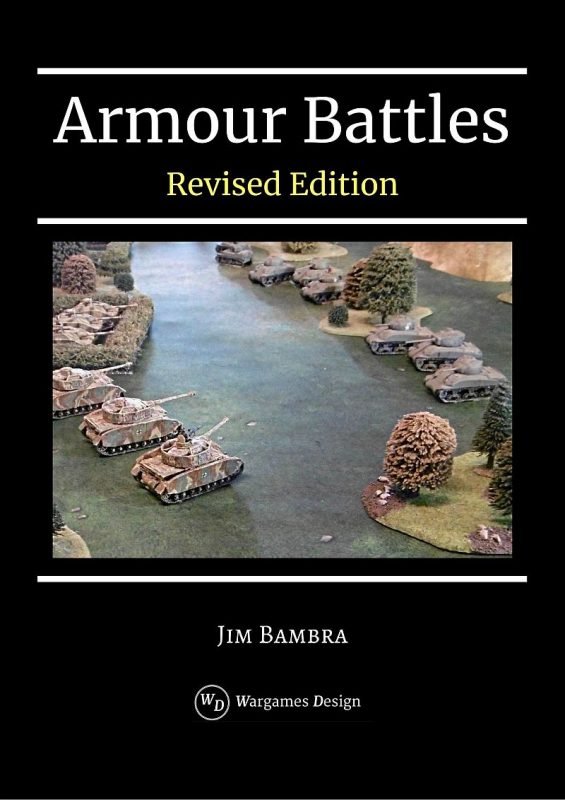 When I first designed Combat HQ, I decided that mortars would have a 54” range for the German 8cm mortar and 108” for the 12cm. These ranges were based on the extreme ranges of mortars. I thought that they worked fine, especially when it’s remembered that the Soviets used 120m mortars as long-range artillery.
When I first designed Combat HQ, I decided that mortars would have a 54” range for the German 8cm mortar and 108” for the 12cm. These ranges were based on the extreme ranges of mortars. I thought that they worked fine, especially when it’s remembered that the Soviets used 120m mortars as long-range artillery.
Then a few people raised the question of whether the mortars were too powerful. They could effectively fire to any part of the table and only required another unit to spot for them.
Had mortars become a super weapon that didn’t represent their historic role?
It got me thinking. I’d set the range for other weapons based on battlefield performance. Weapons in the game are capable of firing farther than the game allows them to. But as hitting the target at these extreme ranges was difficult, I reduced the ranges to the long ranges listed in Combat HQ. What I didn’t do was restrict mortars in the same way.
My first attempt at reducing the mortar ranges tied them to similar ranges for indirect close support fire. This worked fairly well and limited the 8cm to 48”. But was it enough?
Tom Penn sent me some very interesting data that showed that, while mortars were capable of firing long distances, they were inaccurate at such ranges, and the additional charges required quickly wore out the barrels. More importantly, firing at extreme ranges was not the purpose of mortars.
US War department Tec Manual 15th March 1945
The range of the 8cm mortar depended upon the charge used.
Main Charge = 591yds (12”)
+1 Charge = 1094yds (22”)
+2 Charges = 1597 yds (32”)
+3 charges = 2078 yds (42”)
+4 Charges = 2,625yds (52”)
Longer ranges mean less accuracy and more extra charges, more ammo required, and was therefore not encouraged.
Global Security Organisation Quote
“The primary role of mortars is to provide immediately available, responsive indirect fires that support the manoeuvre of the company or battalion, and that reinforce direct fires during close combat.”
This quote clearly states that mortars are there to support the infantry or armoured infantry battalions. Their tactical role is to provide fire support. A range of 30” was suggested for the 8cm mortar. This reduced it from 54” to 30”. A big reduction in range. It was now first and foremost an infantry weapon. It outshoots machine guns and rifles but not so much that it can fire at targets anywhere on the table.
12cm Mortar
But what about the 12cm mortar? It has a very long range and, as was pointed out, it could potentially dominate a game.
In 1944 the Germans began to replace the 8cm mortar with the 12cm. Not because of its longer range, but because of its increased destructive power. Infantry battalions continued to operate as before, but substituted the 12cm mortar for the 8cm. For this reason, the 12cm has now been given the same battlefield range as the 8cm. It is operated and controlled in the same way as the 8cm; it’s just more deadly. It gives excellent fire support to infantry battalions, and its reduced range keeps it tied to the infantry battalion.
Soviet Off-Table 120mm Mortars
When used as off-table artillery, 120mm mortars can fire at their extreme ranges. They are called and controlled by regimental artillery officers and perform a distinct role different to immediate infantry support. If a 120mm mortar is present on the table, its range is reduced to 30”.
Mortar Ranges
Commonwealth 3” mortar 30”
German 8cm & 12cm mortar 30”
Soviet 82mm and 120mm mortar 30”
US 81mm and 4.2” mortar 30”




Ì think what you are trying to establish is effective range as opposed to maximum range. Thàt is something naval wargamers continually confuse to.
Hi Mal. Yes, it’s easy to get sucked into technical data – just because the weapon has a long maximum range doesn’t mean it can be targetted accurately and quickly over those distances. Once I started to look at the battlefield role of mortars, it was clear that they were used for direct infantry support and not as long-range artillery.